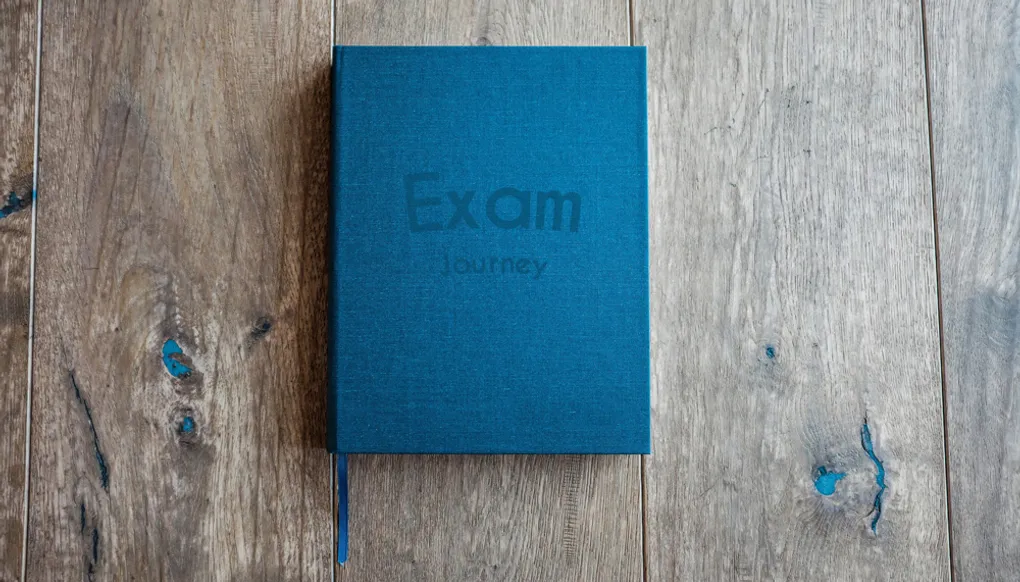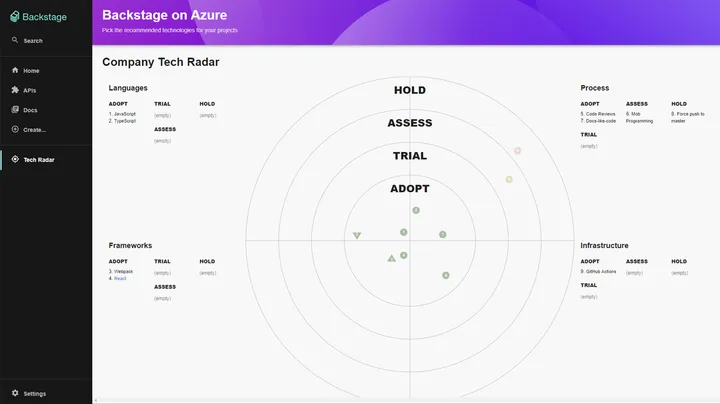The Exam Journey to Microsoft Certified Azure Solution Architect

Many years ago I completed two Microsoft developer exams, however, since those early years in my career I ignored the certification program. At the end of 2020, this changed and I decided to take another look at the Microsoft certifications. A lot has changed in the 15 years since I first took a Microsoft Exam. From the shift to a role-based certification program, the new fundamental exam level, the amount of online content (both free and paid) along with the easy access to try technologies.
Although for most of my career I have been primarily a software developer I have been using Azure for a number of years and have had the opportunity to implement RBAC, blueprints and governance solutions, use multi tenant setups, plan disaster recovery and use many of the resources in Azure. For this reason I decided to pursue the route to Microsoft Azure Solution Architect.
There are many online guides on the skills and technologies needed to pass the exams so I will not be covering those. Rather in this post, I wanted to share a more personal story of my experience, partly as a log of my approach, but also to share my thoughts on preparing for Microsoft exams more generally and the resources used. It is worth noting this is just a set of reflections on my own approach and not necessarily the right or wrong way.
The Beginning
If you are not familiar with the Microsoft certification program, there are 3 levels: Fundamentals, Associate and Expert with a range of exams at each level. All the Azure exam codes start with AZ and are grouped by area such as administrator exams starting AZ-1XX, developer AZ-2XX and architect A-3XX. You can read more about this on Techielass blog or on the certification poster
A place many people start is with the AZ-900 Azure Fundamentals exam. This is the kind of exam I had wished was around when I had started all those years ago at the beginning of my career. People take this exam for many different reasons, some use as a first step into Azure, other use it to get used to the exam taking processes while others use it to set a baseline.
Tip: AZ-900 has more free resources than other Azure Exams. Further down under the YouTube section of this post you can find more links for these.
Pacing the Learning
A question I often have been asked is how long does it take to learn and pass a certain exam? I decided early on that I wanted to take my time and strike a balance with all of the other things in my life rather than going as fast as possible though the exams. My primary goal was to learn, so often I would learn something new and go deeper than I needed to strictly for the exam.
The time needed will partly depend on your experience, what technologies you work with and the knowledge gaps you need to learn. For me there was a definite correlation between how frequently I used the skills in my job and how much work was needed. As a software engineer I found the architect exams had many parts of Azure typically used by an operation teams such as AD Connect so that is where I personally spent more time to learn.
Looking back I spent between 8-12 weeks with the various learning activities for each exam and then a 2-month break between each exam to focus on other things.
Tip: During learning I saw many other people post on twitter they had passed the exams. This motivated me, making it feel more achievable however I think it is important to remember the exams are not a race and to take the exam when you feel ready.
My Journey
The AZ-900 Azure Fundamentals is an entry level optional exam, so I decided to use AZ-204 as my starting point. It is not directly on the path to Solution Architect however being a developer and having used nearly all the technologies I felt this was the best way for me to get back into learning for an exam and the format of MS exams. Looking back I think if I had taken AZ-900 I would have been less nervous going into my first exam.
Following on from AZ-204, I chose to take the AZ-303 then once I had passed this AZ-304. Reading other accounts some people took these exams together while others took them in a different order. Looking back I am not sure I would have benefited from changing the order myself.
It is worth noting that since I have taken the Solution Architect exam it has been announced the path to Microsoft Azure Solution Architect will be changing. This post however will focus more on the general techniques and considerations rather than the particular exams.
Motivation
Everyone has their own reasons for aiming for certification. Although I have been using Azure for the last six years I have been mainly using PaaS and Serverless features at a company that is fully cloud-based. Therefore for me learning and taking the certification was a motivation to step out of my comfort zone and get a better understanding of the whole Azure ecosystem. In the past, I have found that knowledge of a service existence can come in extremely useful when trying to solve problems.
Finding motivation is the thing that will keep you going with any goal. Thomas Maurer has a page on why you should become Microsoft Azure certified. The Microsoft learn page also talks over the many other reasons to take certifications should you need more inspiration to identify your motivation.
Understanding your motivation can then help you build a plan. For myself as learning was the goal, time frames were extended and I intentionally left the road to look at the other things I found on my way. If your motivation is for a new role or a requirement you have you may build a different plan.
Approaches and Resources
I used a similar approach to each of the exams I have taken. Each person will have their own learning styles and approaches that worked for them.
For each exam my approach was to read over the skills measured documents to identify the items I needed to take extra notes and practice on. I would watch videos in the related learning path on Pluralsight taking many notes. Following this I then worked through the Thomas Maurer exam guides which linked to MS learn and additional videos before setting up some of my own scenarios in Azure to get used to the technologies.
When I felt reasonably comfortable with the content, reviewing the skills measured document I ran through a set of practice tests. With these I would read the explanations in detail and then go back over any topics I was falling short on.
Skills Measured
The first place to look is the skills measured PDF for each Exam from the Microsoft learn pages. This is a list of all the items that could potentially appear on the exam. Personally I went over a printed copy with a pen and identified the areas I need to do the most and least work on. I then looked over this on a regular basis and used it as the primary checklist to decide when I was ready to take the exam.
Tip: These documents are updated regularly and although changes are announced in advance on these pages I was nearly caught out with updates thinking only to check at the start of my learning and just before the exam.
Thomas Maurer Exam Study Guides
Thomas Maurer is a Senior Cloud Advocate at Microsoft and his blog contains free study guides and advice on the Microsoft certification process. He makes sure his guides are up to date as the exams change and as people give feedback.
I heavily used these throughout my learning and highly recommend the guides.
- Tips on how to take Microsoft Azure Certification Exams
- AZ-204 Study Guide: Developing Solutions for Microsoft Azure
Learning Videos
One of the biggest changes in the last 15 years is the amount of online content available. For me video content was a great way to get information at a range of levels both indirectly and directly linked to the exams I was taking.
Azure Friday
There are over 400 episodes on Azure Friday. I found this a good initial introduction to technologies that I had not used, before going deeper using other resources.
YouTube
There are a number of entire courses on YouTube for AZ-900. I collected a few links, though not pursuing the AZ-900 myself I have not watched them all.
- Microsoft Azure Fundamentals Certification Course (AZ-900) - Pass the exam in 3 hours! By FreeCodeCamp
- AZ-900 | Microsoft Azure Fundamentals Full Course, Free Practice Tests, Website and Study Guides by Adam Marczak
- AZ-900 Azure Fundamentals Hints and Tips by John Savill
Going beyond AZ-900 and looking more generally I have found John Savill’s YouTube Channel to be extremely useful going into great depth on a range of Azure resources featured in the Azure Architect exams.
Pluralsight
When I started looking at the AZ-204 exam I initially ran through a number of the Role IQ tests on Pluralsight. These are multi choice tests aligned to job titles though not exactly a match with the skills needed for the Microsoft Exams. It helped me identify topics I needed to spend more time working on for the developer exam. When I came to the architect exam I had found many other resources so chose not to use the Role IQ tests.
During my time learning towards AZ-204 Pluralsight launched an AZ-204 Learning Path. These are videos tailored for the exams, in many cases created for the learning path. The path also included shorter exam alert videos highlighting focus areas to learn. In total for AZ-204 there are 11 hours of video and as with the other videos on the site the quality was exceptionally good.
When I came to the architect exams I started by watching the 11 hours for AZ-303 and later the 19 hours for AZ-304.
- Microsoft Azure Architect Technologies (AZ-303)
- Microsoft Azure Architect Design (AZ-304)
- Developing Solutions for Microsoft Azure (AZ-204)
Pluralsight is a paid for subscription. When initially looking I noticed there are other options such as Linked in learning that also have learning collections based around the exams however I have not used these myself.
Hands on Practice
It is essential to get hands-on experience to really understand the technologies. The great thing is that Azure allows you to do this at low cost. You can set up many different scenarios and in most cases inside the free tier. Throughout the learning process I often found myself setting up different scenarios and trying out the different options.
Tip: Remember to remove any resources you have finished using and set up budget alerts in Azure to notify you of your spend should you forget.
Learning Group
During my learning for the second exam I started an Azure learning group inside the company I work at. Each week we would chose a range of topics to focus on then meet once a week to discuss what we had individually learnt. This format worked well as often people had looked at different parts of the same technology or tried things in different ways. It was also helpful to raise questions that we could talk over as a group. In many ways I wish we had started these earlier, though we have chosen to continue these even after passing the exams.
Official Documentation and MS Learn
The official documentation is very detailed and covers so much more that is needed for the exam. I initially ignored these as they were quite overwhelming however as I progressed I found them to be an invaluable resource. Both the Thomas Maurer Exam Study Guides and the reference links in the practice tests pointed at individual pages and from them I read further and deeper on the topics.
I found some of the best content in the diagrams such as ones showing how to pick a load balancing solution and in the comparison tables.
Looking back at times I did go a lot deeper, and went off down some unrelated paths. My reason however for taking the exams was to learn so this was not an issue.
MS learn different than the documentation pages as it is more guided. In many cases it will create a sandbox so you can try the modules tasks directly int he browser. I found these modules to be really valuable.
Practice tests
Use of brain dumps (real exam questions that other people have shared) are strictly forbidden and lead to candidate bans
Practice tests however are really valuable and simulate the exam experience. Measure up is the official partner for Microsoft practice exams. I used these for AZ-204 and found them to be really beneficial. Every option when a multiple choice question is given is a real technology. I found often the biggest gain from the practice tests for me were even on the question I got right was the explanation and links to further resources for the other options.
When you look for practice tests you will quickly find WhizLabs and I have seen them recommended by Microsoft MVPs. The biggest thing you notice is that the cost is about a fraction of Measure up tests. I used WhizLabs for the AZ-303 and AZ-304 and in my experience they were good enough however the quality, explanations and question format did not match that of Measure up. Looking back I think I would have learnt more from using Measure up though WhizLabs are continually improving the practice tests. Tim Warner has a more in depth comparison and covers the differences in his MeasureUp vs WhizLabs - A Detailed Comparison video.
As part of my Pluralsight subscription it offered free practice exams via kaplan. Pluralsight videos are full of high quality content by amazing authors so I had high hopes. I started in the AZ-204 practice test however in the test I tried I found it was in my opinion to be low quality, and covered additional topics not shown in the skills measured. Unlike the Measure up WhizLabs the incorrect options may include items that were fictional. I also found in one case the correct answer was an old preview SKU that had been discontinued some years ago. For this reason although I tried them for the AZ-204 I decided not to revisit them for AZ-303 or AZ-304.
Looking Back
The Microsoft certification program has changed a lot in the last 15 years. Choosing AZ-204 to get comfortable with the exam process before moving on to the architect exams worked well. I was able to use a wide range of resources to prepare for the exams, most of which were free.
I have learnt so much more than I thought I would with the exams, even in technologies I thought I knew well. I am glad I started with AZ-204, though if I was to do it again I would have started with AZ-900. I am also glad I paced the exams over the space of a year and spent the time to go deeper on some topics.
If you have any resources of your own please share them in the comments below.
Title Photo by NeONBRAND.

